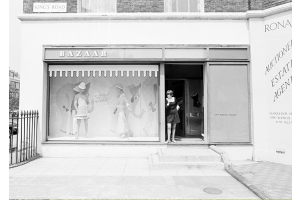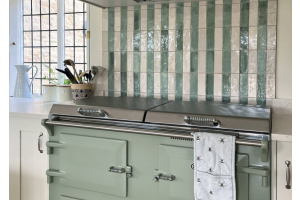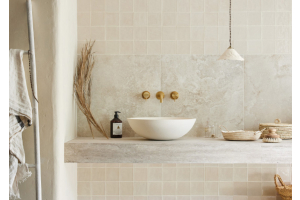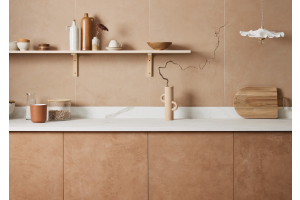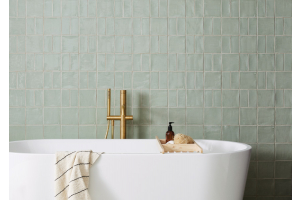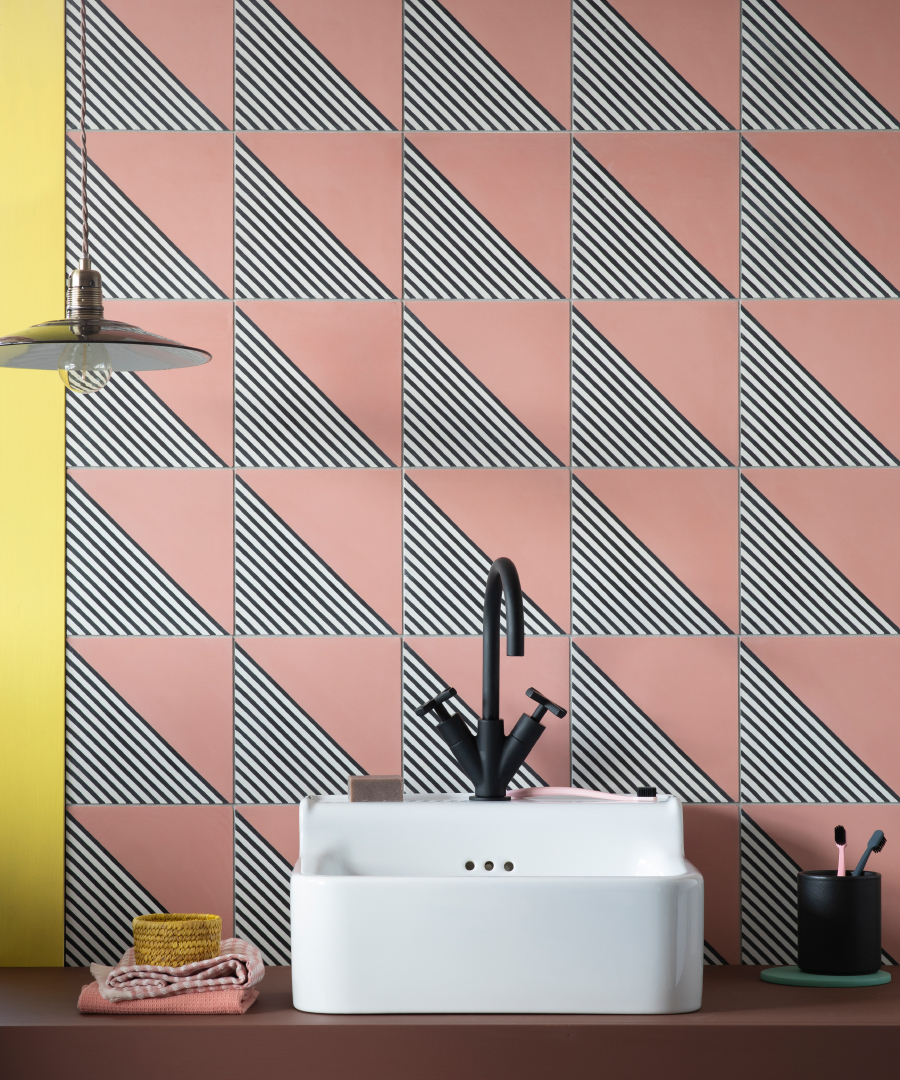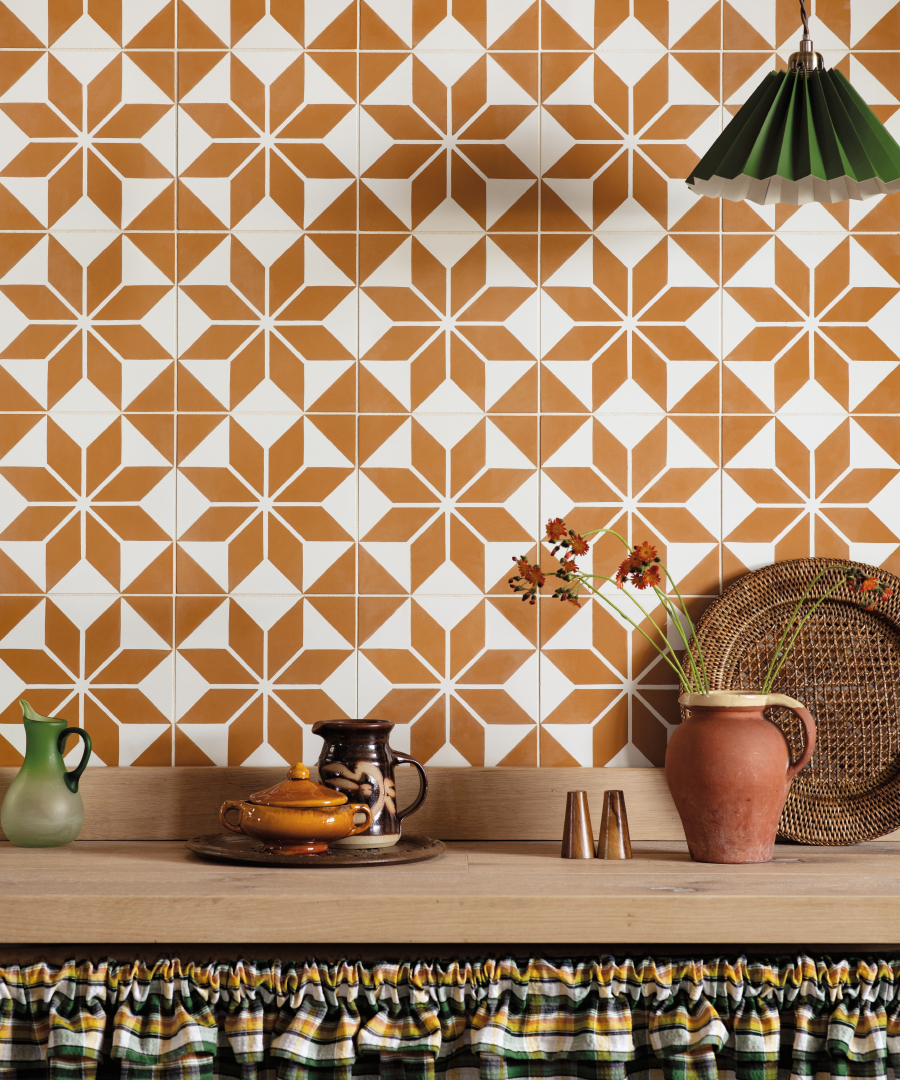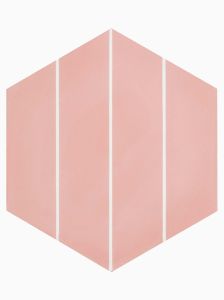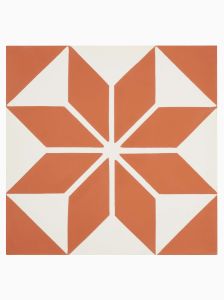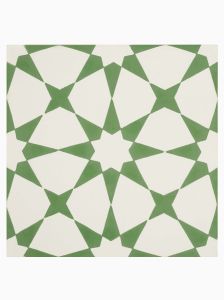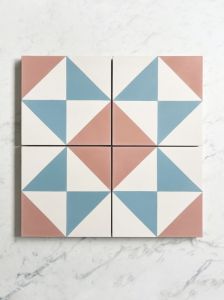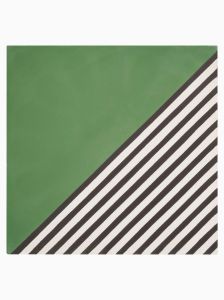
Encaustic Tiles Q&A
Cement and encaustic tiles cause a degree of curiosity amongst our clients, so we thought we would do a Q&A to set out some key points, and cover the questions that our team gets asked most often.
So, what are Cement tiles?
Cement tiles are crafted one by one using ground marble powders and natural colour pigments, upon a base layer of finely dehydrated cement powder and a coarser cement and sand layer. Both our Old Havana and New Romantics collections are cement based. The method of cement tile production is generally considered to have evolved in the mid-Victorian period as a cheaper alternative to kiln-produced tile, with the cement helping to bring costs down.
Why do people say encaustic tile when they really mean cement tile?
Well now…good question.
In actual fact encaustic tiles are produced differently than cement tiles.
Encaustic tiles are made using a similar mould technique, but the clays are fired in a kiln and not pressed like cement tiles. The term encaustic comes from encaustic metal enamelling which results in the same intricate patterns and designs. However, the two processes of enamelling and encaustic tile production have nothing to tie them together, the results just look similar in design terms, and so the word encaustic became used for kiln-fired tiles too. Over time the two terms of encaustic and cement got confused, and often when people say encaustic they mean cement. At Claybrook we use the two in tandem, although our two collections are strictly cement not encaustic, we invariably use the word encaustic.
Is the pattern just on the surface?
As the clays in both encaustic and cement tiles are put into a mould, the colours and pattern will remain over time even if the tile wears down. This can be seen in churches where the floors were laid hundreds of years ago. Encaustic tiles became very popular in Victorian times as intense decoration became popular; the method allowing for multi-colour designs. After the invention of cement later in the century, the cement-based method was also used as a cheaper alternative.
As a side note; the surface of ceramic and porcelain tiles are generally printed or embossed, unless they are ‘through body’ tiles. This is where the material is the same colour and texture throughout the entire tile.
Where are they made?
In many parts of the world. The tradition for making cement tiles is strongest in countries such as Spain, Morocco and Vietnam. There were thriving industries in the UK, France and Belgium until the mid 20th century, when tastes changed and cheaper materials and floor coverings such as linoleum were produced.
In Egypt, as of 2021, just one man is left producing the tile in the way his ancestors taught him.
How are they produced?
A mould, or stencil, is designed and usually handmade in metal a bit like an elaborate cookie cutter, creating the pattern framework into which the desired colours are poured. The mould is then carefully removed. This is clearly skilled work, with more of a hand finished production technique than ceramic and porcelain. In fact, very steady hands are required to pour pigment into the finer parts of the mould.
The tiles are then pressed using hydraulic pressure and dried out. Unlike porcelain and ceramic tile, they do not go into a kiln. Once dried, they are resurfaced by machine to smooth the top. This process acts like a seal to stop dirt penetration. Often, they are cleaned again and then dried. As the pigments are poured into a mould, the colour remains even if the tiles wear down over time.
Where do the patterns originate?
Although some are familiar from the ancient world, many were conceived in Europe during the 19th century when the material became widely used. Tastes in pattern and colour do vary country by country, and region by region encompassing recognisably oriental, European and south American motifs. In more recent years, designs have simplified and two-toned options are equally as popular as some of the more riotous choices.
Why are the colours so bold?
Generally, colours will be stronger and crisper in cement tiles than porcelain or ceramic due to the pigments used, and because of the pressing rather than firing method of production. If you really want the colour to pop, there is a fantastic product from Fila called Stone Plus that will both protect the tile and enhance the colours, something you may want to do with our bold New Romantics collection in particular. Ask our store for further details about sealing, or contact our technical team via [email protected] if you need help or are using them in a commercial setting that may need greater tech guidance.
Why do cement tiles sometimes look a bit marked after being laid?
Sometimes if not completely dried the surface forms a bloom or salting effect. Whilst not inherently harmful this can make the tile appear aged or faded, something clients may welcome or reject. They are often produced in hot countries where damp is not a major issue. If used in unheated rooms in the UK, or rooms with heat variation, this can cause salts from the pigments or patches to appear on the surface. These tend not to cause holes or break the tiles, but can change the overall appearance. Fitting and Sealing is absolutely key to getting a floor to be proud of. Use a fitter who has worked with cement tile before; it is a multi-stage process that can put the space being tiled out of action for a few days.
'Fitting and Sealing is absolutely key to getting a floor to be proud of'
Do they need sealing?
Yes, in order to have a good result it is important to follow guidance on fitting and sealing. We have produced a comprehensive guide which you can view by clicking the link here.
Can they be used for walls, splashbacks or counter fronts in bars and shops ?
Yes, just make sure the wall is strong enough to take the weight. A good builder or installer will be able to advise on this, alongside the best sealants to protect the tile from spills and splashes.
Why are the cement tiles at Claybrook cheaper than others I’ve seen elsewhere?
The Claybrook crew had worked in design before, spending many years importing tiles including cement. Upon forming Claybrook Studio, we utilised our worldwide contacts when deciding upon the portfolio of product to be sold. By working directly with the makers and not paying UK middlemen or importers, the team have been able to produce tiles not only with the most beautiful designs, but also to negotiate fantastic prices. The tiles are, however, amongst the best quality we’ve seen, with a uniformity born of careful production and exacting technique and execution. Cheaper doesn’t always mean inferior quality; it can just mean a less greedy approach to design.

